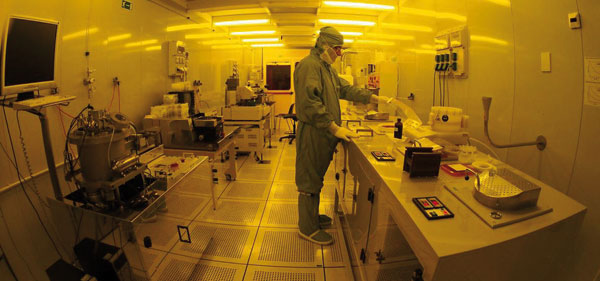When public administration supports innovation
ASTER is the consortium for innovation set up by Regione Emilia Romagna, by 6 Italian regional universities, by the CNR and ENEA and by the sector associations. It stands as a landmark for favouring company access to innovation, mainly via the coordination of the Hitech Network, a network of public and private research laboratories serving the entrepreneurial fabric. To better clarify purposes and intentions, we met up with Fabio Rangoni, president of ASTER.
 Called upon to play an institutional role as president of Aster, first of all Fabio Rangoni is an entrepreneur, who has always believed in the potential of a broad-spectrum of collaboration and innovation, preferably if supported by a structured network capable of offering companies information tools capable of favoring cultural and market development.
Called upon to play an institutional role as president of Aster, first of all Fabio Rangoni is an entrepreneur, who has always believed in the potential of a broad-spectrum of collaboration and innovation, preferably if supported by a structured network capable of offering companies information tools capable of favoring cultural and market development.
Let’s start from afar... When and why was the Emilia Romagna High Technology Network set up?
Aster came into being 1985, under the initiative of the Department of productive activities of Regione Emilia Romagna, in order to promote actions for the development of regional production, industrial and strategic research, encouraging technology transfer and assisting companies in the development of innovatory projects. In almost thirty years Aster’s offer has become broader and today its main strength is represented by the network of more than 100 laboratories and research and innovation centers situated throughout the region, a landmark for companies that want to develop innovatory products. It is a very pragmatic organization, attentive to the needs of companies and, therefore, accustomed to collaborative business oriented methodologies. I myself, who for some months now has occupied the position of president, continue to be first and foremost an entrepreneur, and as such particularly attentive to the welfare of our companies and concerns.
How did you come to the presidency of Aster?
As an entrepreneur, I have always been convinced that it is essential for concerns, even small and medium, to invest in both innovation and internationalization, also and especially in times of crisis. A few years ago I decided to ask for the support of Aster to obtain some funding to carry out a series industrial development projects. The company for which I was in charge not only got regional funds linked to calls for tender of Prriitt and Spinner, but also developed a fruitful collaboration with a research worker operating at one of the laboratories of the network, subsequently employed by us. Following that, alongside my work as an entrepreneur, I was for six years managing director for innovation at Unindustria Bologna. In this role I tried to foster a relationship of collaboration between the concerns that made up the business district and the High Technology Network.

What benefits can a company obtain by cooperating with Aster? How does one retrieve information related to your business?
It is very simple to find out what Aster does, just connect up to the website (www.aster.it) to have access to an "innovation menu", that enables one to understand the wide variety of our network. Aster’s competencies are divided according to six technology platforms, belonging to as many industrial macrosectors (Agribusiness, Construction, Energy and Environment, ICT Design, Mechanical Materials, Life Sciences) and are declined through the network of laboratories situated throughout the region. These laboratories represent a reservoir of competencies available to the productive world, serving as a potential partners for the development of cutting-edge technologies. Aster though does not limit itself to merely providing technological support, but it is able to act as an incubator for innovative start-ups, providing assistance to young entrepreneurs who want to pursue their own venture. In concrete terms: Aster assists them by providing mentoring at all stages that preclude the establishment of a company with high technological content, from the drafting of business plans, marketing analysis, up to the choice of where to set up the concern. Lastly, Aster, through its own "First" counter, offers advice on financing for research, indicating the best channels for each specific company.
What is the added value of Aster compared to other organisms present in the area?
I state that I do not consider Aster to be competing with other structures, if the purpose is to facilitate access to innovation by industry, we welcome anyone who, for various reasons, wants to cooperate with us. But I think the uniqueness of Aster consists in being a subject comprising all the elements that you need to put into play when you wish to start an innovative project, in this case the world of research (represented by the network of laboratories), represented by the network of laboratories), industry (coming under the various trade associations) and, last but not least, people with the competences needed to perform scouting activities and provide technological advice on financing
The research community is moving on an increasingly global scope. Alongside the provision of "local" competences, how is Aster moving in the international arena?
Reasoning in global perspective is essential, even for an organization that is built up on local competencies. Since 2008 we have been part of the Enterprise Europe Network, which unites more than 600 structures from 54 countries from around the world, created with the aim of placing European companies in contact with the most suitable research facilities globally. To give you an idea of how it works, just think that in 2011-2012 this network enabled the signing of 394 transnational agreements. Of these 77 were technology transfer operations and 192 research projects true and proper. Therefore, if a concern needs technologies that are only available abroad, that's where we're are going to get them.
The photos in this article were taken in the laboratories of the Emilia Romagna High Technology Network



















